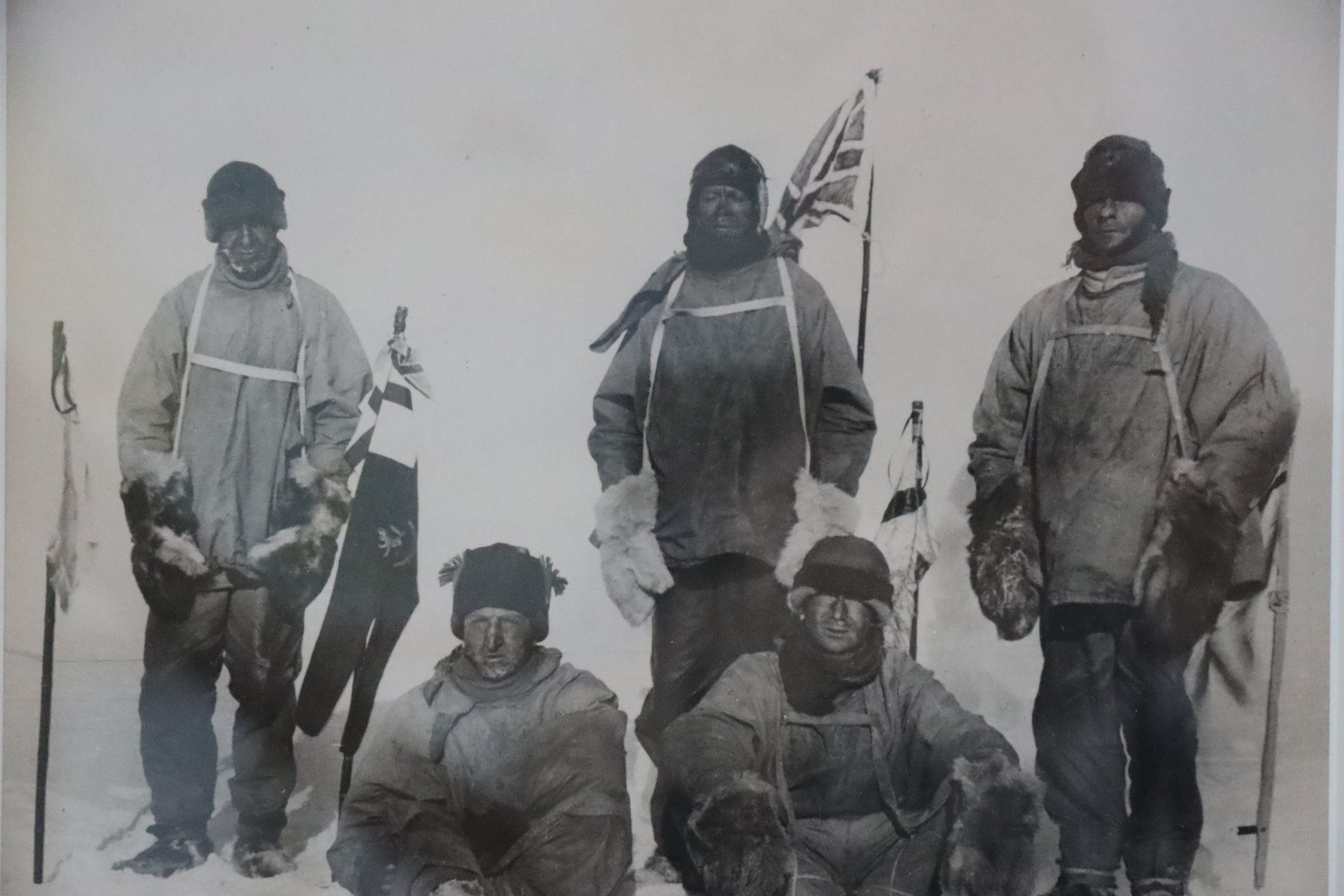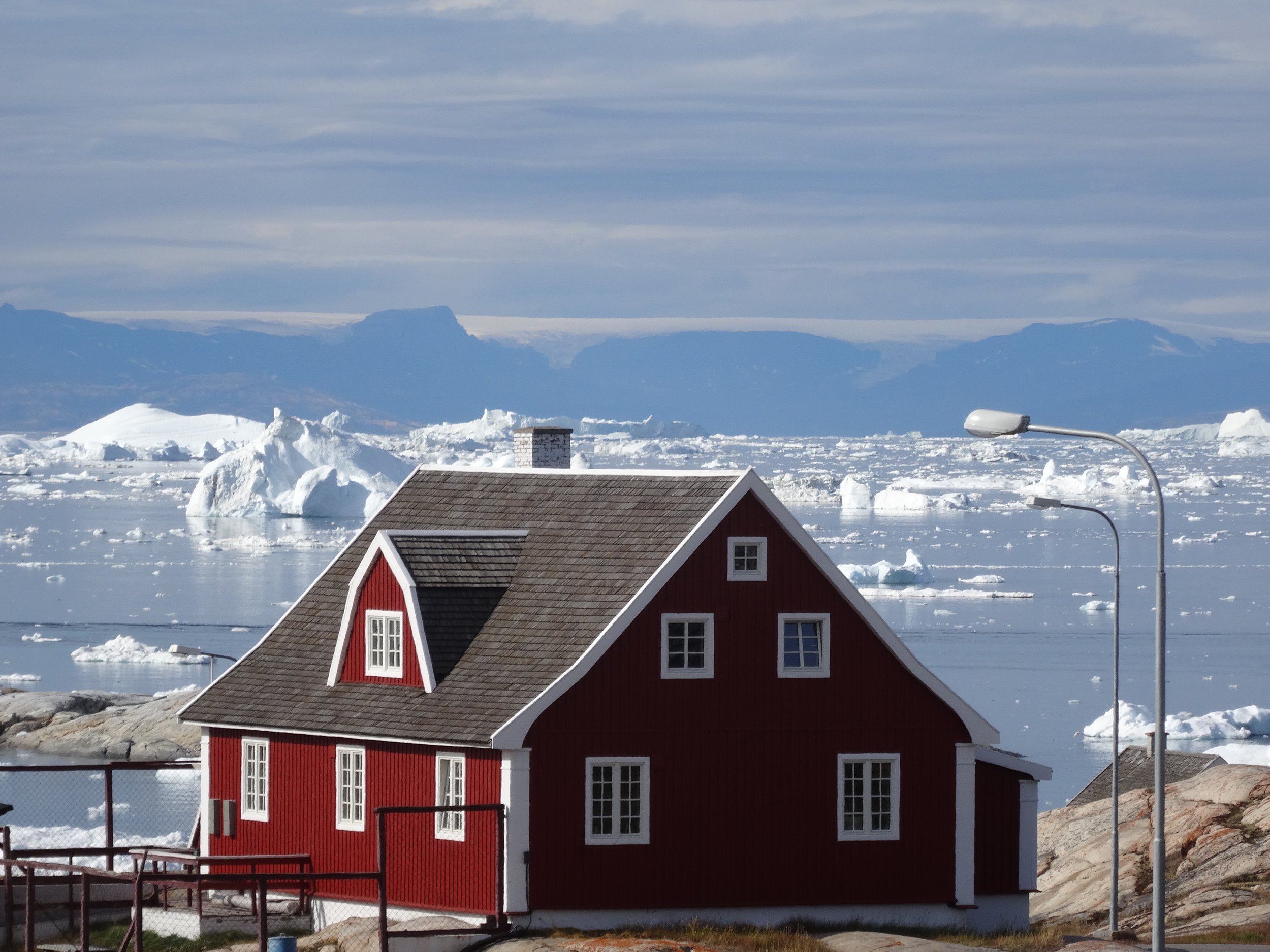
Expeditions and Exploration Explorers of the Heroic Age
Old Press Photo Scott and Party - The Museum of Travel Collection
“Amy Johnson, Queen of the Air
“I am an ordinary woman who did extraordinary things. The first to qualify as a ground engineer. The first to fly to Australia single-handed. A million people lined the streets of London when I came home. I waved to them from an open-topped car like the queen, the queen of the air.”
Hero’s and Herorin’s of the Heroic Age of Exploration
-

Amy Johnson - 1903 - 1941 - Presumed dead 5th January
Amy Johnson Pilot and and not just an extraordinary woman, but an extraordinary human being - this diminutive bust is near where she sadly died doing what she loved most - flying - Amy and her American counterpart Amelia inspired our love of flying, and oddly both ladies died to the same day and month, but two years apart, both in a twin engine aircraft and both allegedly lost, run out of fuel and then lost at sea. Amy was flying from Preswick to Oxford but ended up in Hearne Bay. Some say lost in bad weather, others on a secret RAF mission? Later stories said that an anti aircraft gunner confessed to accidentally shooting her down, and it is even alleged she survived the crash only to be sucked into the propellers of the rescue ship - Her body like Amelias was never recovered. I guess we may never know?
She was just 37 when she died , a loss to aviation and humanity. Amy Johnson Aviation Pioneer.
-

John Rae
One of the explorers explorer. Orcadian by birth he explored Northern Canada for the Hudson Bay Company and found out what happened to Franklin Expedition from inuits. His report of Franklins men resorting to Cannibalism to survive sent shockwaves around the world . An exponent of using native survival and transport methods. There are several interesting Rae artefacts in the Orkney Museum, well worth a look, including Inuit artefacts and Raes shotgun, Halkett Cloth Boat and snowshoes.
Rae was an exponent of living off the land, having little equipment and using native methods. Modern day survivalist and outdoorsman Ray Mears holds John in great stead. Sadly Rae’s honesty and courage at both discovering what happened to Franklin counted against him and he was shunned by society never recieving the Knighthood he richly deserved. He is buried at St Magnus Cathedral, Kirkwall.
-

Amelia Earhart 1897 -1939 - presumed dead 5th January
Amelia astride her twin propeller aircraft. She was the American equivalent of Britain’s Amy Johnson, and of course vice versa. There are so many similarities, they were both similar ages, both broke records, flew out of Croydon, and both dissapeared on the same day of the same month, presumed dead, just 2 years apart. They both died flying a twin-engine aircraft, both allegedly lost and run out of fuel, both deaths are surrounded by mystery and controversy, neither girls body was sadly ever recovered. She was just 41.
They both inspired through their courage, fortitude and moxy, we would love to have met them. Our aviation flights are a direct result of their love of flying and inspiration they have given us and we made them and in particular the Tiger Moth flight in honour of them both.
-

Robert Falcon Scott
Original old press photo from the museum collection. Titled 5 Men at the Pole. With a cool middle name like Falcon, what else could you be than one of the most celebrated polar explorers? They were so close to making it to the next lay down point, but they didn’t - just 11 miles short.
Like many before him and after it was those last few miles that did for them, a point when you have reached the absolute limit and beyond of human endurance. Having experience that point of limit ourselves all I can say is I understand.
Captain Oates self sacrifice on the Terra Nova Expedition at realising all was was lost and by giving himself to a blizzard so that may save others was one of the most selfless acts ever. Whether he actually uttered the immortal phrase “Just popping out - I may be gone some time” is open to debate, what cannot be debated is is selfless act to save others.
-
Jacques Cousteau
If Fridtjof Nansen is the godfather of Polar Travel then Jacques Cousteu is the godfather of Scuba diving. (Self Contained Underwater Breathing Apperatus.) Not only Jacques is co-credited with designing the open circuit aqua lung we know today, he popularised the sport through TV shows and his soothing and laconic style introduced us to a whole new underwater world. Jacques inspired many a person to scuba dive, including us.
If you like conspiracy stories we have a great one involving the troop carrier “The Thistle Gorm” the British Government, Jacques Cousteau and several pairs of thigh length waders and and the mysteriously emptied No 5 hold. Is it true? We don’t don’t know but it makes for an intriguing story.
We have some great Technical diving photos from the Thistlegorm ( a Scottish name meaning Blue Thistle) Including the Bren Carriers, Trucks and Motorbikes as well as the Steam Trains on the top decks. It’s actually quite a tough dive with strong currents.
-
Fridtjof Nasen - Godfather of Polar Travel
Fridtjof Nansen was a Norwegian explorer and another explores explorer, and a personal favourite of ours. His native methods and understanding he gained from local inuits enabled him to pass on knowledge to another even more famous explorer Roald Amundsen.
Nansen hypothesized that it would be possible to drift to the North Pole from a certain angle even when trapped in the pack ice - he was probably right - but it would take 5 years. Amundsen tried it and after three years game up.
We have some good tracks in the museum showing the transpolar anticyclonic drift in action when we camped there in 2017. at Ice Camp Barneo.
Not only did Nasen cross Greenland, but he was also a Nobel Peace Prize laureate, explorer, scientist, diplomat and humanitarian, there little he couldn’t do if he put his mind to it.
We met the great (great) grandson of Fridtjof in the Coal Miners cabins in Longyearbayan in Svalbard whilst waiting to get to the North Pole. Modestly he told me his great grandfather has done a bit of cross country skiing and Polar Exploration, It’s a bit like saying “my great grandfather boxed a bit” and it turns out he’s Mohamed Ali…
-

Roald Amundson
Got to the South Pole before Scott and thus secured his credentials as of one the (if not the) greatest polar explorers of all time.
He was first to navigate the North West Passage (2nd if Franklin is credited with it) and First to the North East Passage - 1st to a complete circumpolar navigation.
Roald was an expert planner and used dogs to pull sledges rather than the man power Scott used. Not only was he and his team first to the South Pole, but he also bagged the North Pole, albeit by Airship, in conjunction with an Italian Explorer Umberto Nobile, but he seems to be largely forgotten - time is wasn’t we feel.
There is an amazing exhibition in Oslo which you really must see and a homage to Amundsen with his ship “The Fram,” with a lovely cameo and homage to his rival and contemporary Scott.
Some of the credit should also go to his brother Leon who funded and administered the expeditions.
Roald was despite all the controversy surrounding the two Chukchi girls he brought back with him, a true hero, and almost his life couldn’t have ended any other way - when answering an SOS call to a fellow explorer Umberto Nobile he crashed at sea and tragically lost his life somewhere between Tromso and Svalbard. Nobille was rescued by the Russians.
Like Amy and Amelia his body was also never recovered.
-

John Franklin - The Franklin expedition and all its crew disappeared in 1848.
Franklin set off on an expedition to discovery the fabled North West Passage, and ironically he and his crew probably actually found it, when in 2014 a Canadian led expedition found H.M.S Erebus, and just two years later HMS Terror, was found in pristine condition.
A scrawled note dated 25 April 1848, and concealed in a stone cairn at Victory Point on northern King William Island, said Erebus and Terror had been abandoned three days earlier, stuck in sea ice, however evidence suggest that Terror was sailed South after this date.
Ironically the Franklin Expedition probably did discovered the North West Passage and the Terror was discovered because of Inuit verbal history and the stories of how they had seen smoke comming out of a ships chimney in the area it was eventually found in.
in 2015 either side of these two discoveries we followed in the footsteps of Franklin, and we have a beautifully illustrated chart, chronicling the adventure ,
Historic Footnote The beach where some of the crew were buried and Terror & Erebus anchored off of are actually a fossilised coral beach - indicating it was once a shallow tropical sea. We found metal slag and charcoal on the beach which is like as not that they engaged in blacksmithing repairs - you would not want to do that onboard. The metal slag can be found in the Museum.
-

Robert Peary
A controversial figure as he claimed to have discover the Geographical North Pole, but probably didn’t.
In 1989, British explorer Wally Herbert concluded Peary did not reach the pole, although he may have come within 60 mi (97 km), which is an incredible feat in its own right.
Having been there ourselves it is harder to find than you think and even with the aid of GPS and a helicopter it is not as easy to locate as you would like, and it is absolutely energy sapping.
To be quite honest anyone that has come anywhere near the North Pole on foot has made an amazing achievement, so hats off to Robert Peary.
Qaanaaq Museum
We thought it wouldn’t be right is there wasn’t at least a brief mention of the people that live in the areas of exploration and they often tell a different story of exploitation and abuse by some European explorers.
The lady demonstrating the cup and ball game was a really interesting character and told us what life was really like for her and her family. Her father was one of the last true nomadic Polar Inuit or Greenlandic Inuit, and they would live in igloos. These were just temporary hunting lodges built out of the local building material - iCE, they are not something you would live in year round. She showed us how they would deal with ticks - a long stick you could get down your boots, and the games they would play in the dark evenings.
It is also the source of our “Shitting Star” story which you can find in The Travel Museum together with fragment of the Cape York meteorite.

















